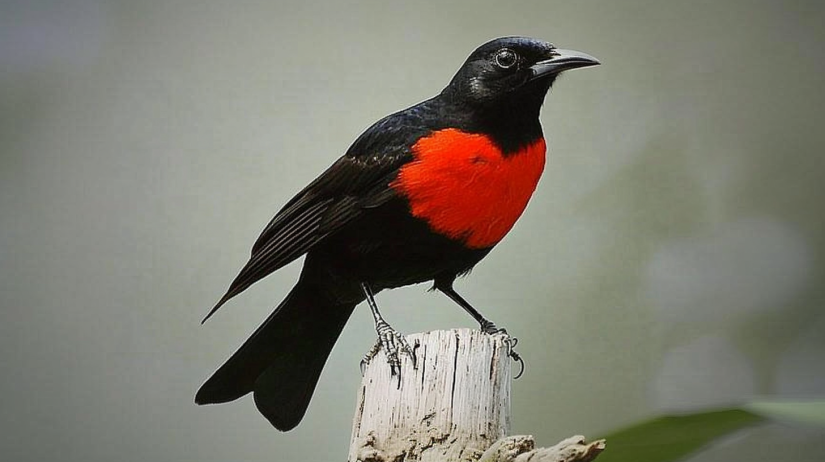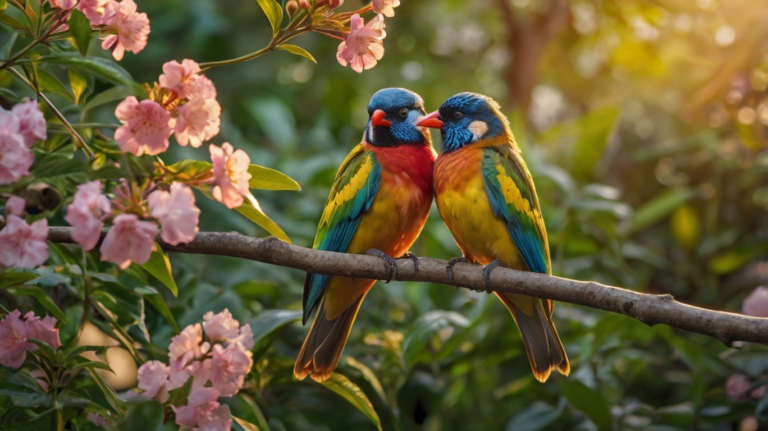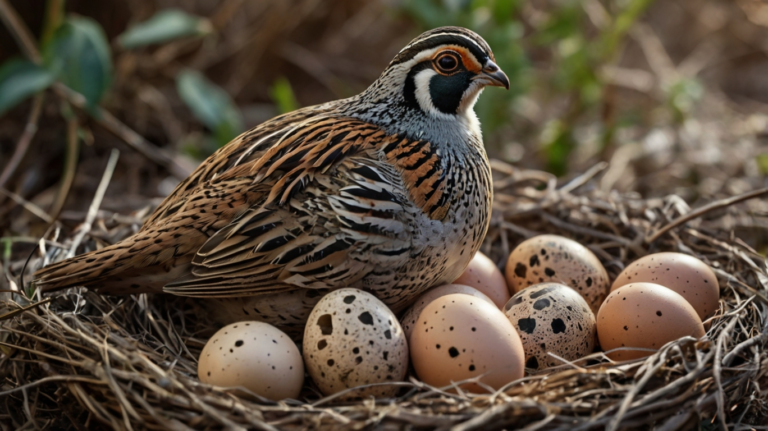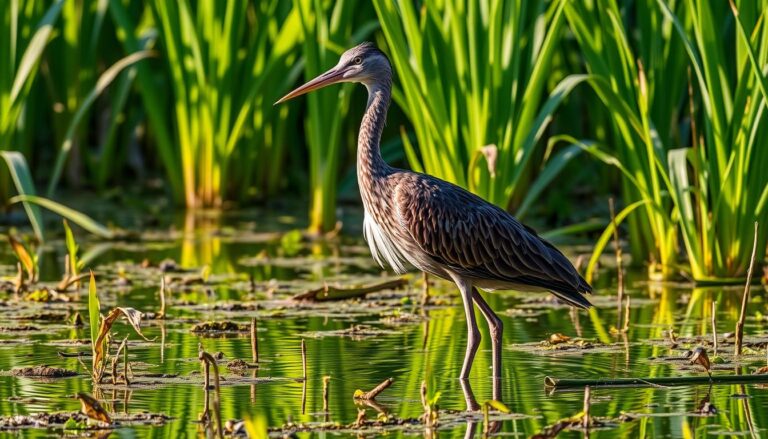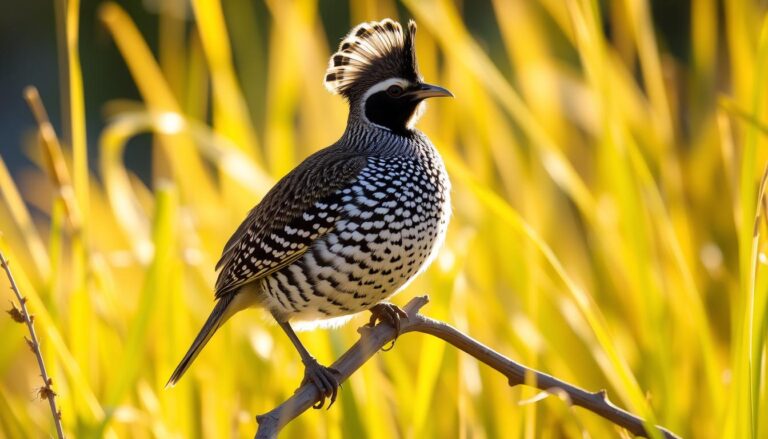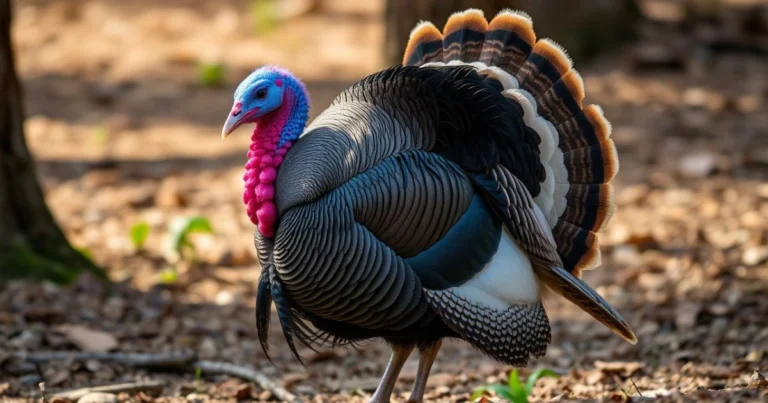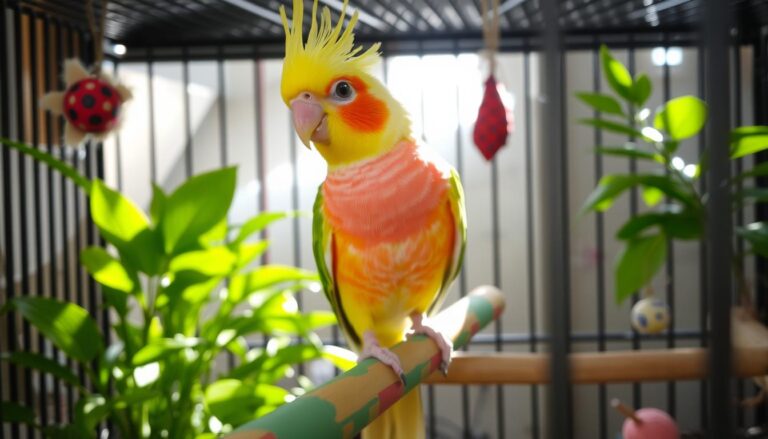Black and Red Birds: 7 Positive & Vibrant Secrets
Introduction
You glance out your window on a warm spring morning and freeze as a flash of red catches the corner of your eye. Is that the Scarlet Tanager, with that fiery body and striking black wings? Or perhaps a Red-headed Woodpecker wearing a bold helmet of scarlet perched on a utility post? Encounters with black and red birds can elevate your day from mundane to magical in an instant—after all, their flamboyant coloration stands out even among nature’s most vibrant creatures.
Yet there’s more to these feathered wonders than just mesmerizing hues. Each species adapted over centuries to fill unique niches, from insect-hawking across open meadows to foraging seeds in forest canopies. You’ll find differences in body shape, feeding habits, migration patterns, and even the calls they use to claim territory. In this deep dive into black and red birds, you’ll discover not just the visual wow factor but also the ecological significance, common species you can spot, tips for respectful observation, and how you can help preserve their habitats. If you’re ready to fill your backyard or your next birding excursion with the mesmerizing swirl of black and red feathers, read on to unlock the secrets of these enchanting avian gems.
What Defines a “Black and Red” Bird?
Understanding Color Morphs
When we say black and red birds, we’re referring broadly to species that primarily exhibit these two striking colors in their plumage. Red can be intense scarlet, vermilion, or a deep crimson, while black might range from a matte charcoal tone to a glossy ebony. Some individuals show additional hints of white or brown, but the overall impression remains a strong interplay between red and black.
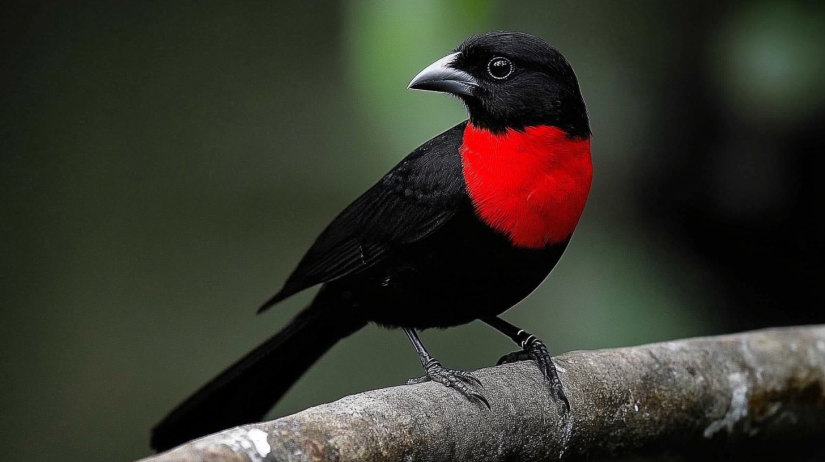
Sexual Dimorphism
In many black and red birds, color differences might exist between males and females (known as sexual dimorphism). Males often boast brighter reds, especially during breeding seasons, while females appear somewhat duller or incorporate more muted tones. Take the Scarlet Tanager, for instance: the breeding male is bright red with black wings, whereas the female is primarily yellowish-green and lacks that dramatic black accent.
Why These Colors?
Red pigments in birds usually derive from carotenoids, which they must obtain through diet. Black pigments (melanins) offer feather strength and can help with temperature regulation, so combining black for resilience plus red for visual signals can be evolutionarily advantageous. Contrasting black-and-red plumage can also enhance species recognition, mate attraction, or territorial displays.
Common Types of Black and Red Birds in North America
While the world offers an array of black and red birds, we’ll spotlight a few notable examples found across North America. Some species remain year-round residents, while others migrate to warmer regions in winter. Keep your binoculars and a local field guide handy, so you can identify these bright wonders when they appear.
1. Scarlet Tanager (Piranga olivacea)
- Appearance: During breeding season, males are brilliant red with jet-black wings and tail. Females present an olive-yellow body with slightly darker wings.
- Habitat: Prefers mature deciduous forests, especially large tracts of woodlands.
- Diet: Primarily insects like moths, beetles, and caterpillars; also eats fruit.
2. Red-Winged Blackbird (Agelaius phoeniceus)
- Appearance: Males are mostly black with a vivid red shoulder patch (epaulet) edged in yellow. Females are streaked brown, resembling large sparrows.
- Habitat: Marshes, wetlands, and open fields near water.
- Diet: Seeds, insects, and small aquatic critters.
3. Rose-Breasted Grosbeak (Pheucticus ludovicianus)
- Appearance: Males have black heads, wings, and backs with a bold red chest patch. Females are streaky brown with a pale breast.
- Habitat: Deciduous woods, suburban backyards with tall trees, orchard edges.
- Diet: Seeds, insects, and berries.
4. Red-Headed Woodpecker (Melanerpes erythrocephalus)
- Appearance: Entire head is scarlet red, contrasting sharply with a black back, plus white on the wings.
- Habitat: Open woodlands, groves of dead or dying trees, farmland areas.
- Diet: Insects, nuts, seeds, and occasionally fruit or sap.
5. Painted Bunting (Passerina ciris) – A Slight Variation
Though not strictly black, adult male Painted Buntings feature bright red underparts with greenish or bluish upperparts. Not a perfect example of “black and red,” but the presence of bright red on the underside plus darker wing areas can sometimes appear blackish. It’s a borderline case if you stretch the definition of “black and red birds.” Still, Painted Buntings remain worth mentioning for their riotous coloration.
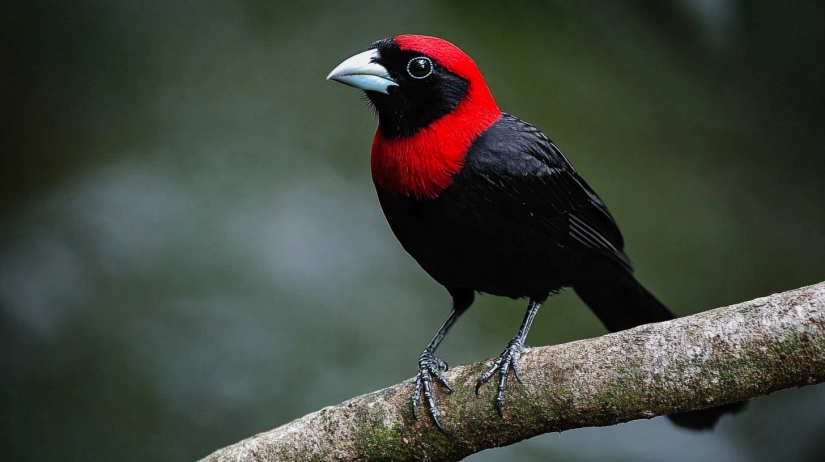
Table: Major North American Black and Red Bird Comparisons
| Species | Primary Red/Black Distribution | Habitat | Key Diet | Notable Trait |
|---|---|---|---|---|
| Scarlet Tanager | Bright red body, black wings/tail | Deciduous forests | Insects, fruit | Seasonal color dimorphism |
| Red-Winged Blackbird | Black body, red shoulder patch | Marshes, wetlands, fields | Seeds, insects, small aquatic animals | Males form polygynous harems |
| Rose-Breasted Grosbeak | Black upper, red chest, white belly | Woodlands, suburban yards | Seeds, insects, berries | Melodious, robin-like song |
| Red-Headed Woodpecker | Red head, black wings, white patches | Open woodlands, farmland | Insects, seeds, nuts | Known to cache food in tree crevices |
| Painted Bunting (partial) | Bright red underside, bluish head, green back* | Thickets, edges, brushy fields | Seeds, insects, fruit | Nicknamed the “Nonpareil” for its color |
Why Are These Birds So Mesmerizing?
Visual Contrast and Signaling
Many birds sporting strong color contrasts use them for mate attraction, territory defense, or species recognition. The mixture of black and red can telegraph vigor or breeding availability. Alternatively, black pigment in feathers can enhance structural durability and thermoregulation, while red hues—often from diet-based carotenoids—show off a bird’s foraging success and health.
Cultural and Symbolic Value
Across cultures, red is frequently a color associated with passion, vitality, or luck. Black often signifies mystery or transformation. So black and red birds can evoke cultural significance—for instance, in certain myths or local traditions, the red patch might be linked to a story about fiery spirits or heroic deeds. While these myths are not scientifically grounded, they reflect how powerful color symbolism can shape human admiration.
Photogenic and Memorable
For bird photographers and watchers, capturing a shot of black and red plumage contrasted against green foliage or a snowy background can be a highlight of any outing. Social media platforms overflow with images of these birds—like Red-winged Blackbirds perched on cattails, calling forth at sunrise. Observers appreciate the clear color palette that can help identify the bird even from a distance.
Habitat and Behavior
Favorite Environments
black and red birds are quite diverse in their specific habitats:
- Marshland species (like Red-winged Blackbirds) rely on reeds, cattails, or water edges.
- Woodland dwellers (Scarlet Tanager, Rose-Breasted Grosbeak) typically breed in tall forest canopies.
- Woodpeckers prefer stands of mature or dead trees for foraging insects in bark.
Despite these variations, each species needs consistent food sources, protective cover (dense foliage or bark cavities), and safe nesting spots away from predators.
Feeding Habits
Diets vary from primarily insectivorous (Scarlet Tanagers devour caterpillars and beetles) to more omnivorous (Red-winged Blackbirds devour seeds, grains, and aquatic insects). The black and red coloring doesn’t necessarily correlate to a single diet type—food preferences hinge on the species’ evolutionary lineage and environment. If you plan to lure black and red birds to your yard, offering a mix of seeds, suet, or fruit can attract multiple species, though you may also want to maintain insect-friendly landscaping that fosters natural prey populations.
Social Structures
Breeding behaviors also differ:
- Red-winged Blackbirds: Polygynous males, each defending a territory with multiple females nesting within.
- Rose-Breasted Grosbeaks: Monogamous pairs that share nest-building and feeding duties.
- Scarlet Tanager: Known for elusive, treetop nesting and strong male-female cooperation in rearing chicks.
Males often display or sing vigorously during breeding seasons, their red plumage in full show. Outside the breeding period, color might dull or the birds become more subdued in behavior.
Attracting Black and Red Birds to Your Backyard
Creating a Bird-Friendly Space
If you’re eager to observe black and red birds closer to home:
- Native Plantings: Incorporate fruit-bearing shrubs, seed-producing plants, or insect-harboring flora.
- Feeders: Offer suet, black oil sunflower seeds, or fruit-based feed. Grosbeaks and tanagers, for instance, appreciate seeds and fruit.
- Water Source: A birdbath or small fountain can lure in birds searching for drink or bathing spots.
- Protective Cover: Dense bushes or small trees give perches and refuge from predators.
Minimizing Human Disturbances
While these avian visitors can adapt to suburban spaces, keep them comfortable by:
- Limiting Pesticide Use: This preserves the insect population many species rely on.
- Window Strike Prevention: Use decals or screens to reduce reflections that confuse birds.
- Cat Indoors: Pet cats can devastate local bird populations, especially ground-foraging species. Consider supervised “catio” or indoor play to keep your feline from harming wild birds.
Seasonal Adjustments
Some black and red birds are migratory, so their presence may wane in colder months. To keep them visiting in future seasons:
- Maintain feeders through fall and spring migrations, providing vital energy stops.
- Offer roosting pockets or brush piles in winter for those that remain year-round.
- Note sightings in a birding journal or an app like eBird, tracking when certain species arrive or depart.
Conservation Perspectives
Habitat Loss and Fragmentation
As urbanization and agricultural intensification spread, forest edges and wetlands can vanish, jeopardizing the breeding and feeding grounds essential for certain black and red birds. Species like the Scarlet Tanager, reliant on large forest tracts, face challenges when forests become isolated patches. Likewise, wetland depletion can diminish Red-winged Blackbird populations.
Climate Change Impacts
Shifting temperatures and precipitation patterns might alter insect emergence times, plant fruiting schedules, or migration windows. Some black and red birds could expand their ranges northward if warming trends continue, while others might struggle to adapt if their specialized habitat vanishes. Ongoing studies by organizations like the Cornell Lab of Ornithology and Audubon track how climate scenarios may reshape bird distributions.
Citizen Science and Bird Monitoring
Your sightings of black and red birds can aid scientific research—contributing to citizen-science databases helps experts map population trends and migrations. Tools like eBird or iNaturalist allow you to record sightings. Engaging in community-based bird counts or local nature society events fosters awareness and can influence conservation strategies at the municipal or regional level.
Global Variations: Black and Red Birds Beyond North America
Though we’ve centered primarily on North American species, global examples abound:
- Scarlet Minivet (Pericrocotus speciosus) in Asia: Males are brilliant red with black wings, residing in forest canopies.
- Crimson-breasted Shrike (Laniarius atrococcineus) in Africa: With its black upperparts, bright red underparts, and white wing patch.
- Andean Cock-of-the-rock (Rupicola peruvianus) in South America: A more orange-red plus black, but typically included in “red and black bird” discussions due to color blocking.
Each region’s black-and-red avian wonders share common traits—eye-catching coloration that helps them stand out in their ecosystems and, often, specialized diets or display behaviors that reflect unique evolutionary paths.
FAQs
Is the black-and-red color combo unusual in birds?
It depends on the species and region. Many black and red birds thrive worldwide, but some are regionally scarce. Local habitats and migratory routes influence how often you’ll see them.
Are these vibrant birds migratory?
Yes, certain species relocate seasonally, others remain local. Many black and red birds in temperate zones fly south during colder months. Keep track of your region’s migration schedules for best spotting times.
Do these strikingly colored birds show hostile behavior?
Usually, they’re not aggressive to people. Yet many black and red birds fiercely protect nest sites. Conflict emerges when defending territory or mates, typical in bird communities.
Is it feasible to entice them to private gardens?
Certainly. Adequate food, clean water, and protective vegetation draw many black and red birds. Minimizing chemicals also preserves insects they rely on for nourishment.
Is their menu primarily insects, seeds, or fruit?
That depends on each breed’s foraging style. Some black and red birds are heavily insectivorous, while others prefer seeds or berries. Offering a balanced variety boosts your odds of attracting them.
Is color limited to males in these species?
Not necessarily. Numerous black and red birds feature these hues in both sexes. However, male-female differences can occur, with males typically more vivid in color.
Conclusion
When it comes to captivating color, few avian groupings stir the imagination quite like black and red birds. Whether it’s a shimmering Scarlet Tanager perched amid lush green leaves or a Red-winged Blackbird announcing its territory in a marsh, these vibrant creatures bring a delightful burst of contrast to our natural surroundings. But beyond the visual splendor, each species has its own ecological role—controlling insect populations, pollinating plants, or adding melodic calls to the dawn chorus. By learning their habitats, feeding habits, and seasonal patterns, you can better appreciate these feathered wonders in your backyard or while exploring wetlands and woodlands across North America and beyond. Ready to celebrate your own sightings or ask a question? Join the conversation below—together, let’s champion the bright presence and ongoing protection of black and red birds across the globe.
For more guidance on bird identification, habitat conservation, and responsible observation practices, you can visit the
National Audubon Society—a reputable U.S.-based organization dedicated to protecting birds and their environments.

